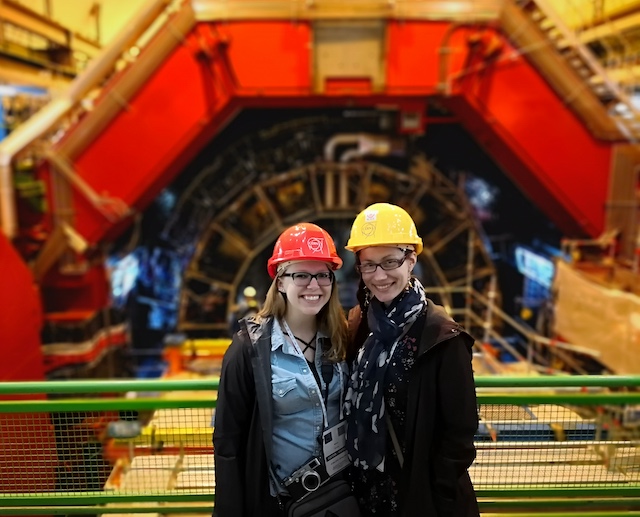GENEVA — Awesome! The word is often overused on things that don’t really deserve it, but OpenStack Day CERN was the literal definition of awesome.
The event was packed with the most inspiring modern science being performed today. We heard from CERN, the Square Kilometer Array (SKA), NASA and the Wellcome Sanger Institute among others. Most of the talks were given by various IT folks at these organizations. While they may not be scientists themselves, hearing them talk about the part they play in the furthering of our communal knowledge of the world around us and how we exist was one of the most engaging OpenStack/open infra events I’ve ever attended.
awesome
/ˈɔːs(ə)m/
: adjective;
extremely impressive or daunting; inspiring awe.
There were over 200 people at the event from a variety of backgrounds. Some were longtime OpenStack users, others new to OpenStack, some returning to OpenStack, others in the OpenStack upstream community interested in its application to science, and others that were just lovers of CERN. There was something for everyone at the event.

After OSF executive director Jonathan Bryce opened with a keynote about collaborating without borders, Ian Bird and Tim Bell from CERN’s IT department were up next. They offered an inside look into how they handle huge streams of data coming in from various experiments (ATLAS, ALICE, etc.) — around 90 petabytes per year! — and pinpoint the notable parts of the data quickly so that they can write that to tape (yes, it’s 2019, and they’re writing to tape.)
As the experiments progress over the coming years, data streaming in will only increase exponentially so they need to find new ways to handle, process and pay for that growth. They weren’t the only ones facing this issue though, SKA has similar concerns. Both organizations are placing their faith in OpenStack.
‘Today we are built on a software stack that is entirely open source.’ -Ian Bird #CERN #openstackdaycern pic.twitter.com/GCIVg1yBr3
— Kendall Nelson (@knelson92) May 27, 2019
NASA and the Wellcome Sanger Institute also gave talks on how their users are making use of OpenStack in their data centers. Their science covers everything from counting trees in the Sahara, analyzing weather data, to genotyping 25 different species of plants and animals native to Great Britain. (This last research project to celebrate the 25th anniversary of the Wellcome Sanger Institute.)
I sat there enthralled–for hours–listening to these speakers tell stories of their users and how OpenStack is accelerating science, hitting on the theme of the event. I was constantly in awe of the brilliance of the scientists making use of OpenStack and incredibly proud to be a part of helping their research and efforts move forward.
It struck me that code I’ve written is being used at CERN. Someday, releases I have helped manage will be deployed at NASA!
LHC @CERN, a new frontier in energy and data volumes by Ian Bird: 2018 experiments have generated more than 88 PB of data, CPU: 1 million x86 cores fully occupied, Storage: 1 Exabyte (500 PB disk + 500 PB tape) @OpenStack for HPC #OpenStackDay pic.twitter.com/5XZCSqtF0g
— Erwan Gallen (@egallen) May 27, 2019
The event itself (and the tours the day after) are part of a bucket list I didn’t even know I had.
Jealous? Open Infra folks should stay tuned to Superuser for videos from event when they get posted later this month.
There’s also the upcoming Ceph day at CERN. If you find yourself in Geneva for the Ceph day or plan to visit Europe in mid-September, CERN will be open to the general public on September 14-15.
You should definitely check it out!
Photo // CC BY NC
- October 2024 OpenInfra PTG Summary - November 7, 2024
- H3C’s Use of the Open Infrastructure Blueprint - October 23, 2024
- China Mobile’s Use of the Open Infrastructure Blueprint - October 9, 2024

)







